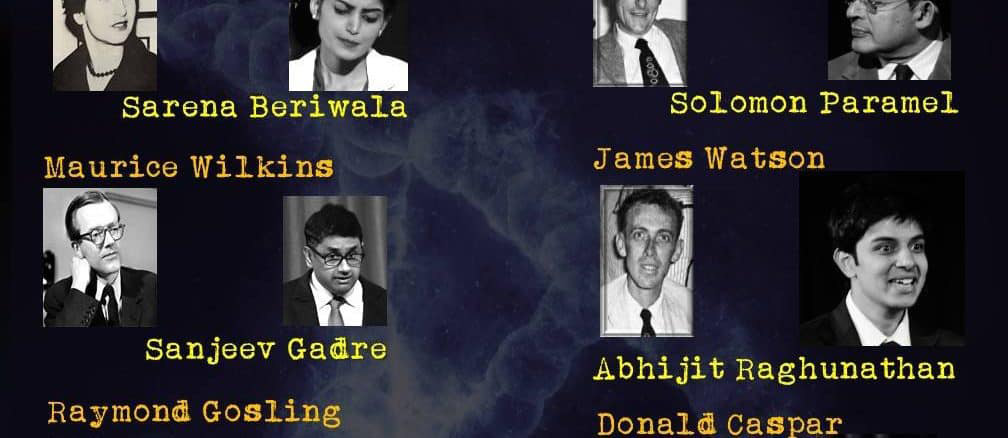Category
Theatre

Theatre
A Play By Anna Zeigler
Directed by Sridhar Ramanathan and Archana Kariappa
August 26th 2018.

Photograph 51 was a theatre performance which opened to a Full House at Koota. Flawless performances and a story that not only enthralled but also informed.
Here is a review of the play.
From Bengaluru Citizen matters – by Deepa Mohan
“To write a play that deals with a highly technical scientific topic, and to bring that play to life on the stage, are two very difficult tasks indeed. Bangalore Little Theatre (BLT) took on this challenge as part of their series, the History of Ideas programme. “Photograph 51” is the sixteenth play in the series.
This is an award-winning play by Anna Ziegler, about the race between two leading laboratories in England, in the nineteen-fifties, to crack the nature of the DNA structure. The title of the play comes from the nickname given to an X-ray diffraction image taken by Raymon Gosling in May, 1952, under the supervision of Rosalind Franklin.
However, the play deals with the many human traits that accompany such a race: ambition, isolation, the need to find fame (and fortune)…and the fact that though Rosalind Franklin played a key part in the identification of the DNA structure,her name does not feature in the history books…for all the usual reasons, and some others, too.
One of the directors of the play came on stage, introduced himself and gave us an introduction to the technical aspects of the play: what DNA is, and the headlong competition to be the first to “crack the code”. As the play proceeded, Rosalind Franklin came to life: a woman driven by her passion for her work, to the extent that the normal human emotions pass her by. She takes up a working partnership at King’s College with Maurice Wilkins, as she does not want to work as a subordinate to anyone else. The two personalities grate upon each other and with the doctoral student, Ray Gosling, and Don Casper, who admires Rosalind’s work and comes to work for her, acting as commentators, the tension of the human interaction builds; the atmosphere is further tensed by the team of Francis Crick and James Watson, who use questionable means to pump Maurice, and get their hands on the photographs that Ray has helped Rosalind take. Does the ultimate breakthrough depend only on rational thought, research and proof? Or does it sometimes take vision, a leap of faith, and plain intuition? These were the questions the play set before the audience.
It cannot be easy to learn and deliver dialogue that has a lot of technical words in it and which has to be accurate too; but the cast managed this very well indeed. Touches of humour leavened the tension, which, however, built up steadily as it became apparent that the Crick-Watson duo had observed the crucial fact of the double helix and Rosalind was missing it. In spite of driven hard work, Rosalind finally succumbs to ovarian cancer…and her name never makes it to the history books….an oversight which the play seeks to redress.
The set design was fairly simple, with lab racks, a variety of bottles and testtubes, and a microscope, with a sign that lights up when the X-ray machine is on. Two tables, one where the competing duo do their work, and one where Rosalind does her work as well as read the admiring letters of Don Caspar, allowed the action to shift in place and time. Clear reference from the cast as to the dates also helped in orienting the audience to the passage of the months and years.
The costumes were as faithful as they could be to the time of the play; formal wear, lab coats, and a severe skirt and top for Rosalind, kept the audience focused on the fact that this was where serious and pathbreaking research was being done. It also underscored the fact that whatever the work going forward, human emotions, prejudices and notions always play their part in the progress of scientific research.”
Read the Whole article here